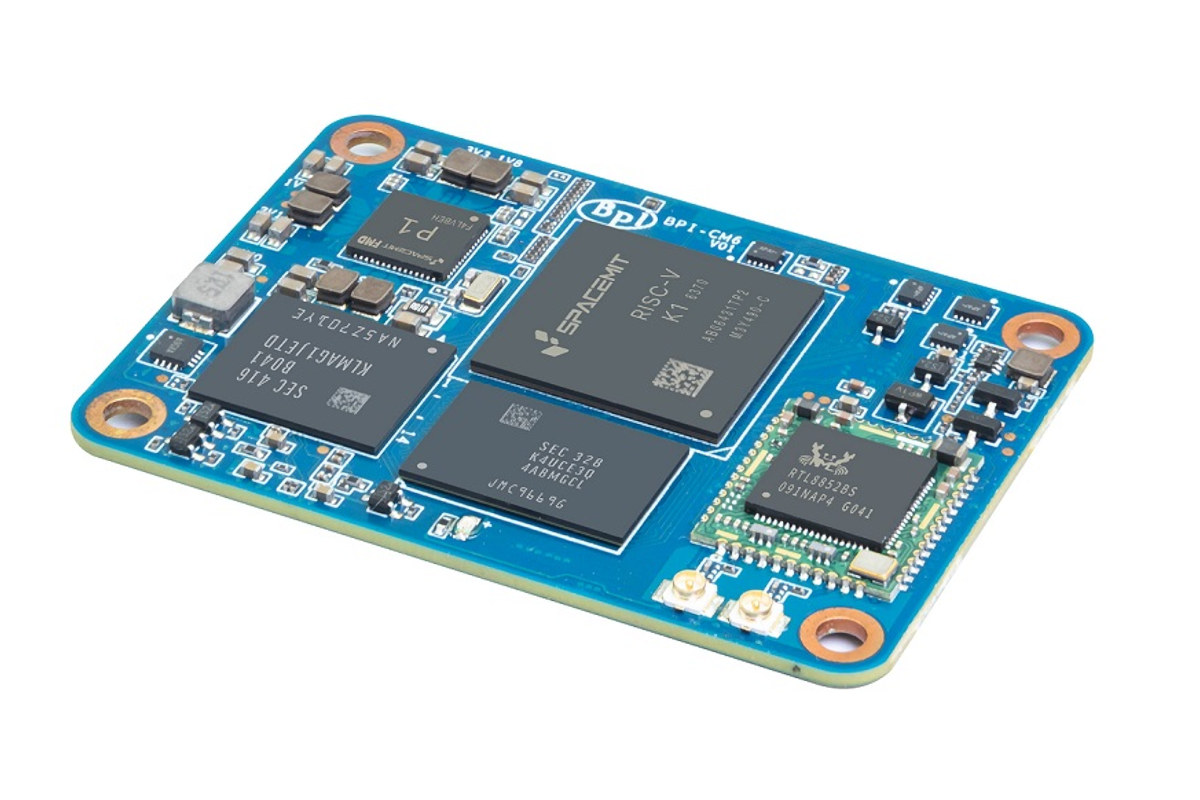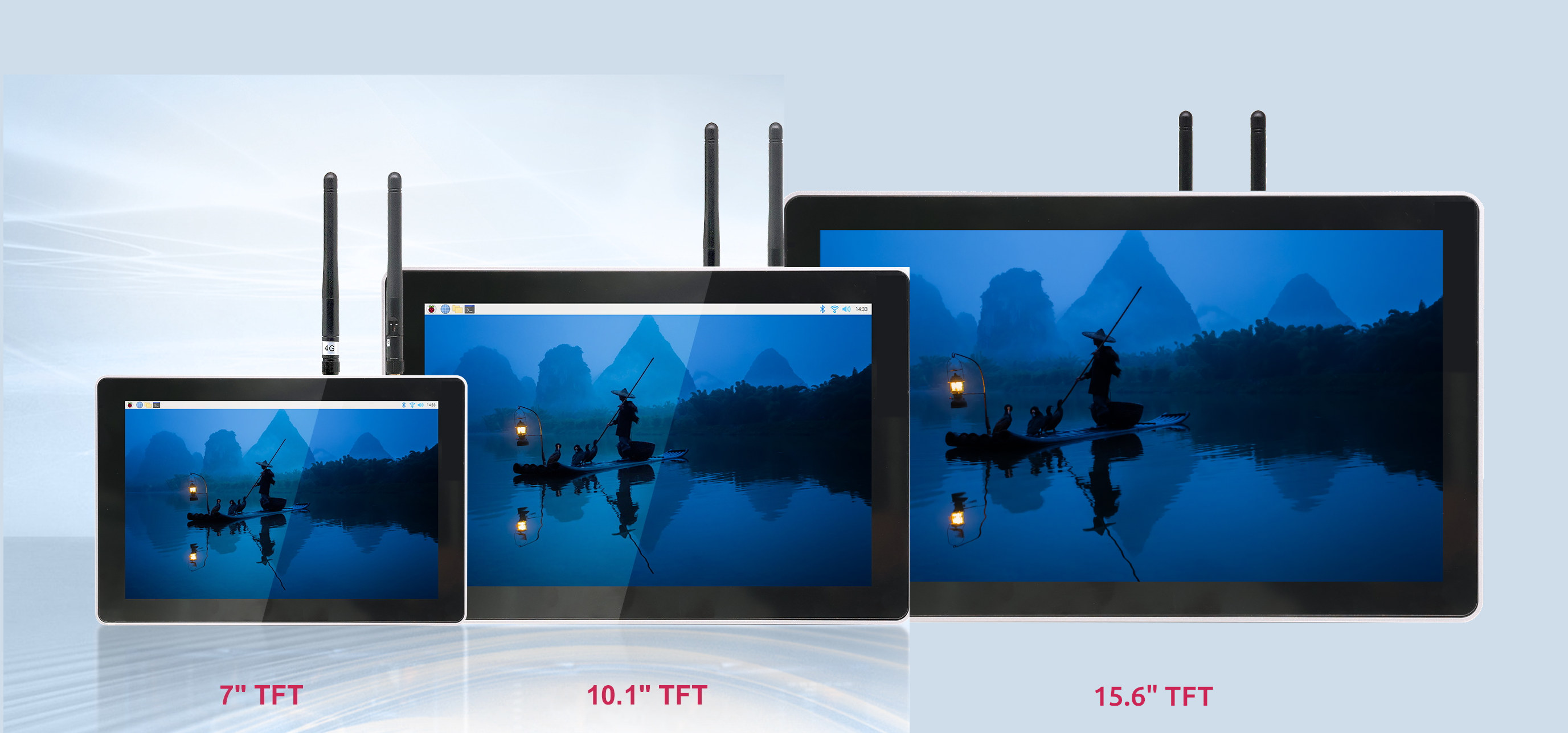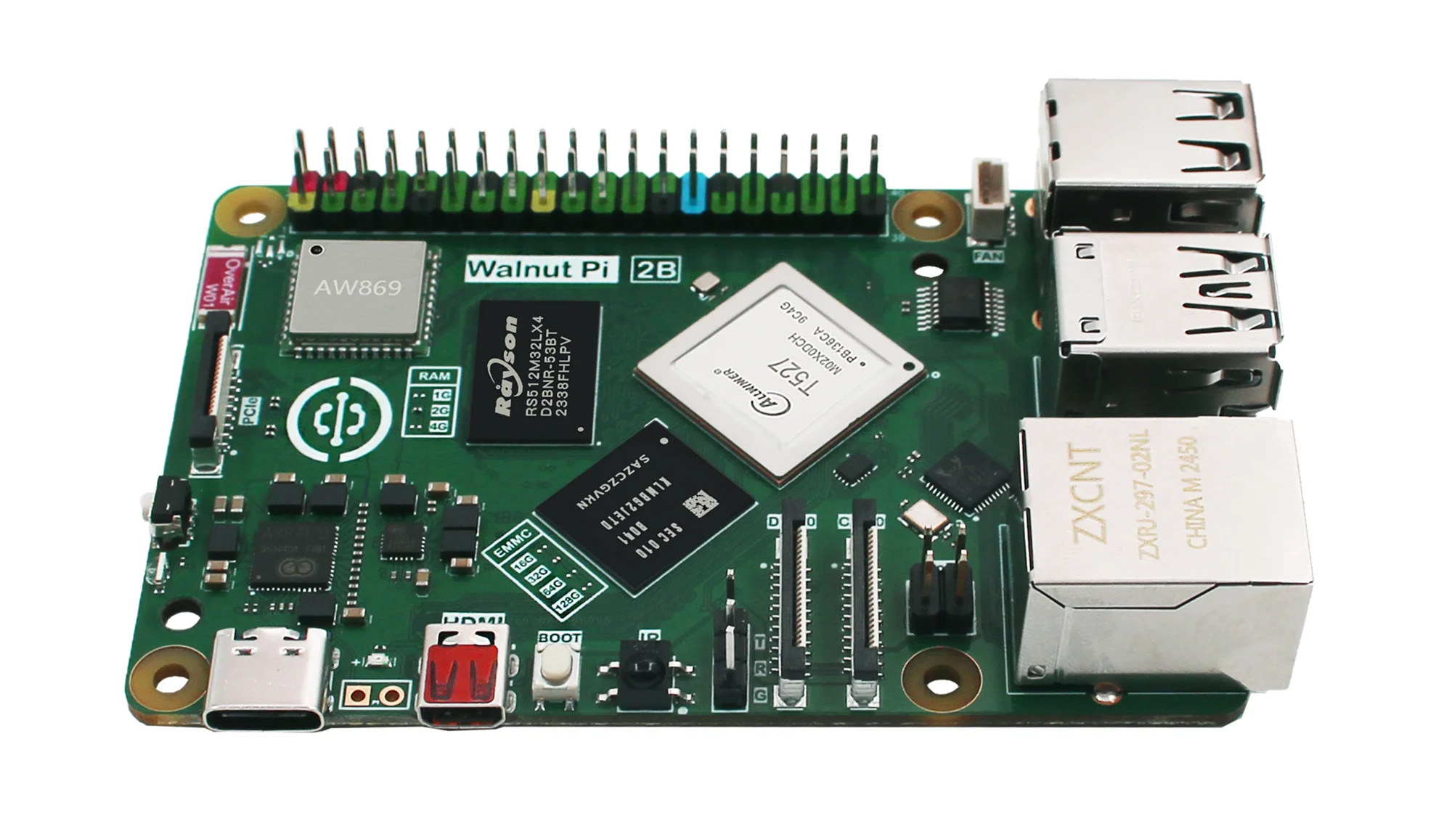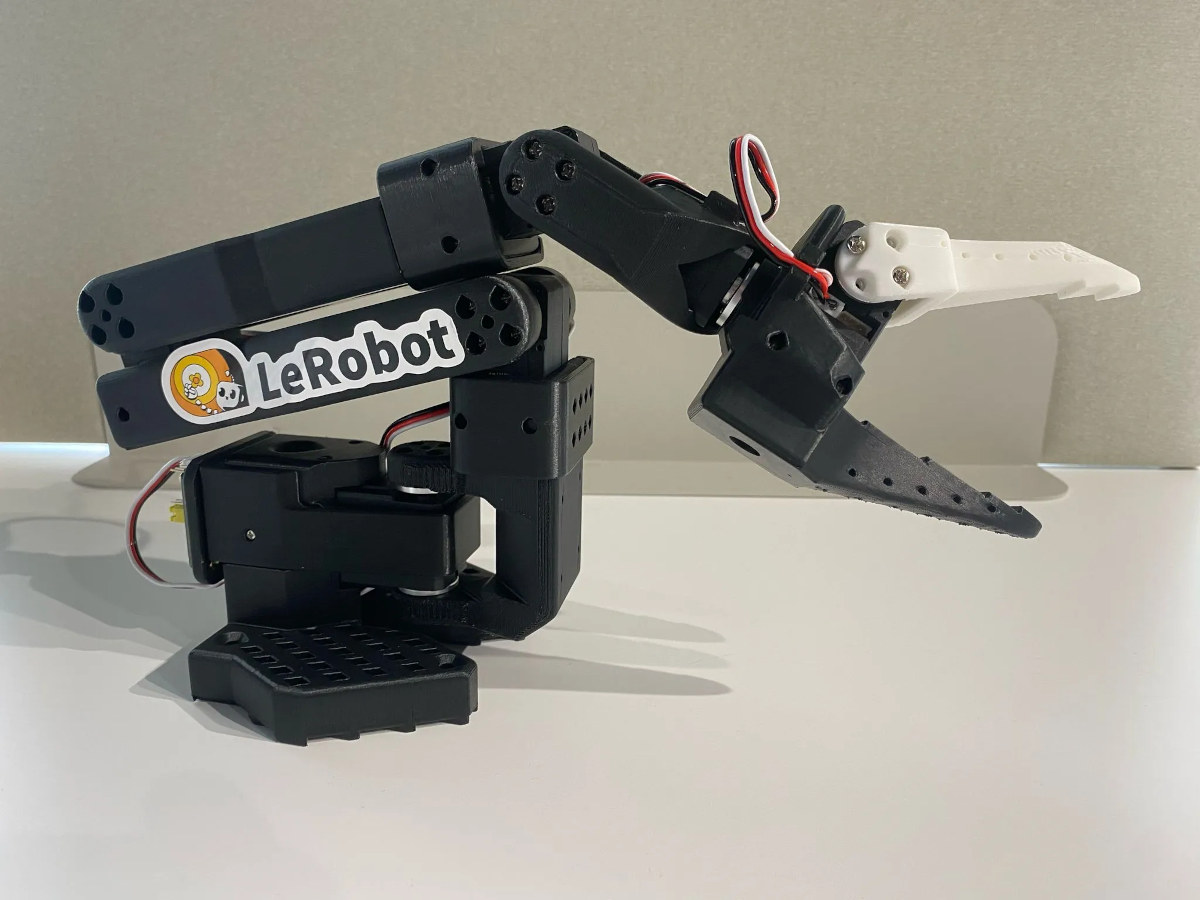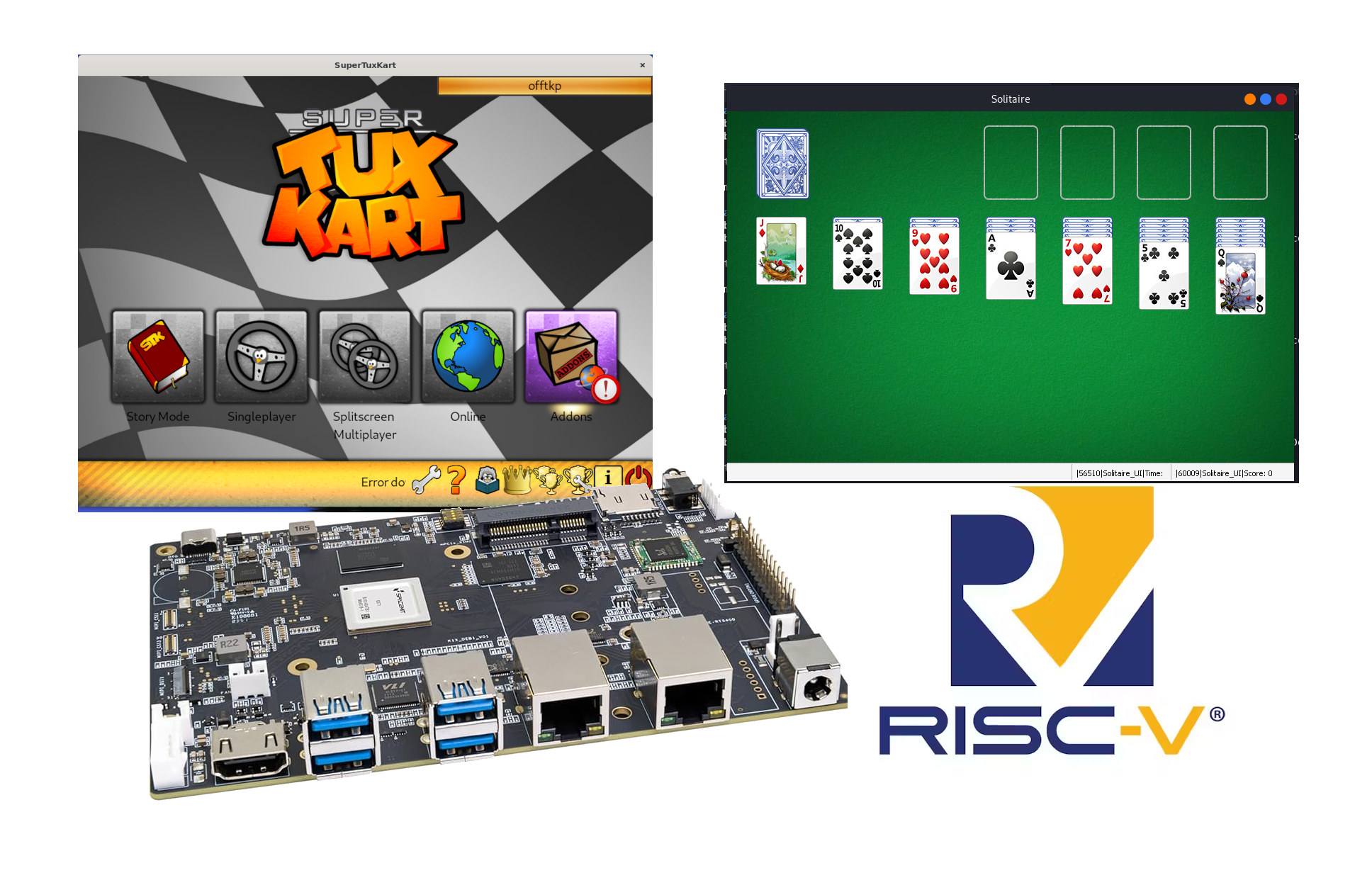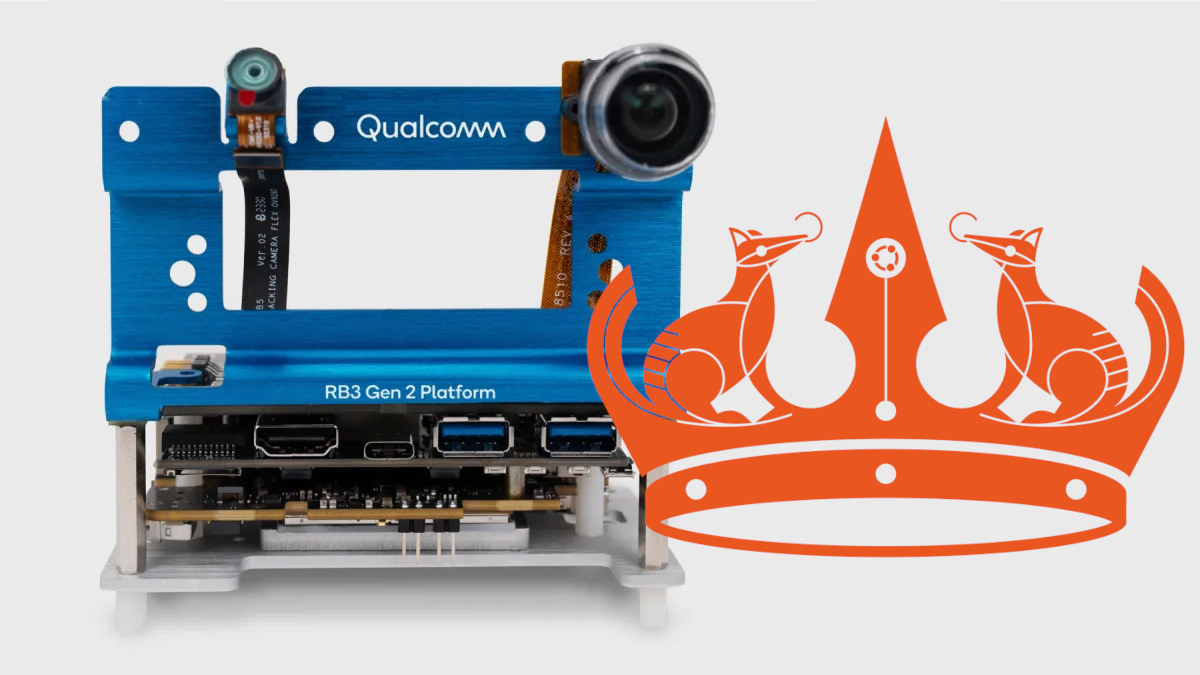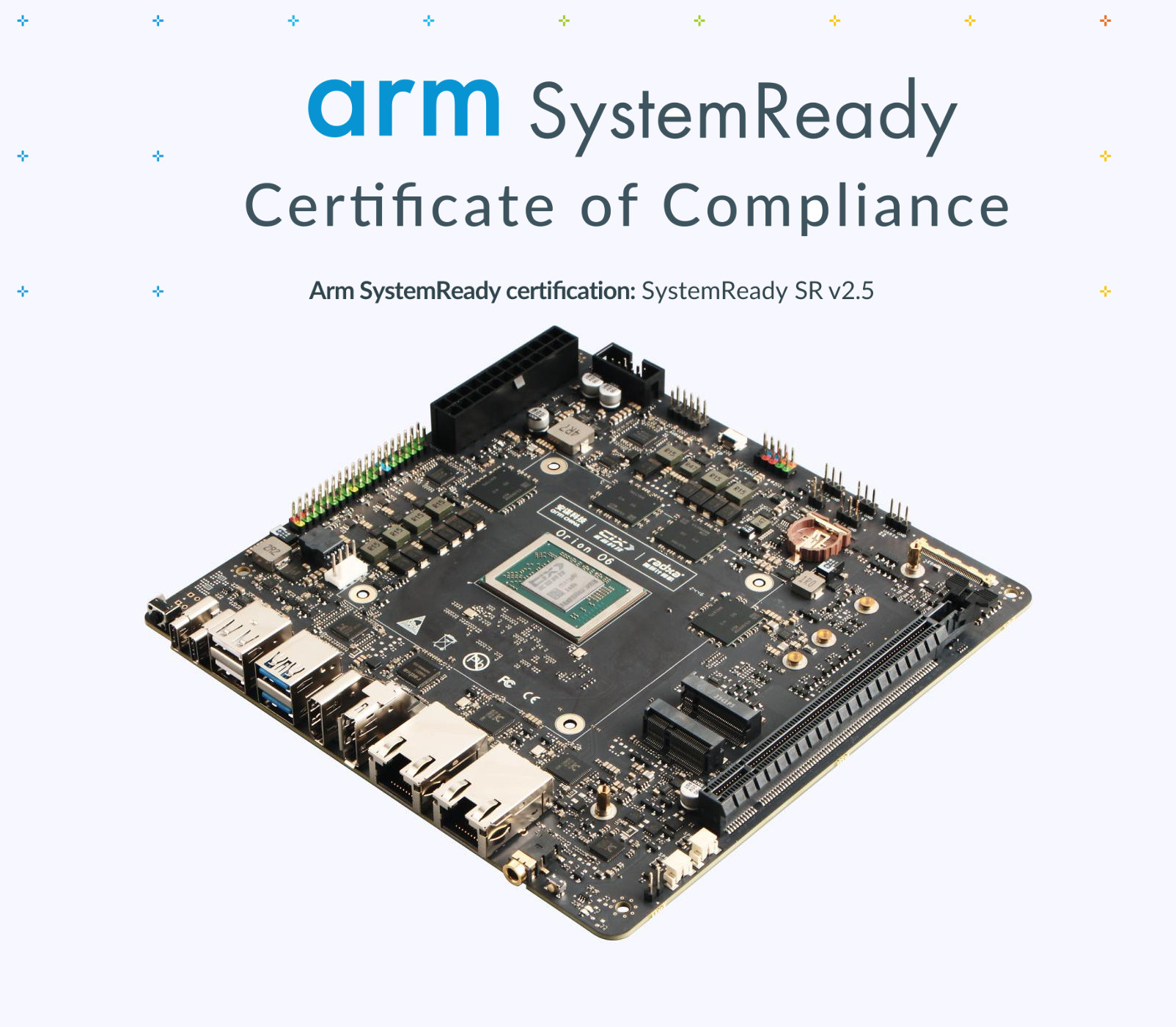Banana Pi BPI-CM6 is a SpacemIT K1 octa-core RISC-V system-on-module that follows the design of the Raspberry Pi CM5, and offers up to 16GB LPDDR4 RAM, up to 128GB eMMC flash, a gigabit Ethernet controller, and a WiFi 6 + Bluetooth 5.2 module. While it remains (mostly) compatible with the Raspberry Pi CM5, the BPI-CM6 exposes some additional I/Os from the K1 SoC through an additional 100-pin B2B connector. The company also offers a credit card-sized carrier board for the RISC-V SoM with HDMI, dual GbE, two M.2 PCIe x2 sockets, a few USB ports, and more. Banana Pi BPI-CM6 specifications: SoC – SpacemIT K1 CPU – 8-core X60 RISC-V processor @ 1.6 GHz GPU – Imagination IMG BXE-2-32 @ 819 MHz with support for OpenGL ES3.2, Vulkan 1.3, OpenCL 3.0; 20 GFLOPS VPU – H.265 and H.264 1080p60 decoding/encoding NPU – None, but the RISC-V cores can deliver up […]
EDATEC launches 7-inch, 10.1-inch and 15.6-inch Industrial HMI displays powered by Raspberry Pi CM5
EDATEC ED-HMI3120 series is a family of Raspberry Pi CM5-powered industrial Human-Machine Interface (HMI) displays available in 7-inch (ED-HMI3120-070C), 10.1-inch (ED-HMI3120-101C), and 15.6-inch (ED-HMI3120-156C) variants. Like the Chipsee 7-inch/10.1-inch Raspberry Pi CM5 industrial panel PCs, the EDATEC HMI displays are designed for factory automation, process control, and IoT applications. All models offer Gigabit Ethernet, 100Mbps Ethernet, isolated RS485/RS232 ports, and wireless options like WiFi and 4G LTE. EDATEC ED-HMI3120 specifications SoM – Raspberry Pi CM5 with Broadcom BCM2712 quad-core Cortex-A76 SoC, 2GB, 4GB or 8GB RAM, and 16GB, 32GB, or 64GB eMMC flash Storage MicroSD card slot M.2 B-Key socket for 2230/2242 NVMe SSD 4KB EEPROM Display HMI3120-070C – 7-inch TFT display with 1024×600 resolution, 16.7M colors, 400 cd/m² luminance, 80°/80° H/V viewing angles, and 10-point capacitive touch HMI3120-101C – 10.1-inch TFT display with 1280×800 resolution, 16.7M colors, 250 cd/m² luminance, 80°/80° H/V viewing angles, and 10-point capacitive touch HMI3120-156C […]
Walnut Pi 2B is an Allwinner T527 octa-core SBC with Raspberry Pi 5 form factor and interfaces
Walnut Pi 2B is a single board computer (SBC) powered by an Allwinner T527 octa-core Cortex-A55 SoC with a built-in 2 TOPS AI accelerator that closely follows the Raspberry Pi 5 design for compatibility with most HAT+ expansion boards and accessories. The Walnut Pi 2B SBC ships with 1GB to 4GB LPDDR4 RAM, an optional 32GB eMMC flash, and features a microSD card slot, gigabit Ethernet, four USB ports, a WiFI and Bluetooth module, MIPI DSI/CSI connectors, and the same PCIe FFC connector as found on the Raspberry Pi 5, and a 40-pin GPIO. One of the most obvious differences is that it only comes with one micro HDMI port instead of two on the Pi 5. Let’s check out the specifications to find other changes. Walnut Pi 2B specifications: SoC – Allwinner T527 CPU Octa-core Arm Cortex-A55 processor with four cores @ 1.80 GHz and four cores @ 1.42GHz […]
SO-ARM101 open-source dual robotic arm kit works with Hugging Face’s LeRobot
SO-ARM101 “Arm Servo Motor Kit” is an open-source dual robotic arm kit that works with Hugging Face’s LeRobot robotics framework and is designed to interface with NVIDIA Jetson AI modules and computers. It is an update to the SO-ARM100 DIY open-source robotic arm kit introduced last year with LeRobot framework support. The new SO-ARM101 is still comprised of leader and follower arms but features improved wiring to prevent disconnection issues previously seen at joint 3, motors with optimized gear ratios, and a few functionality where the leader arm can now follow the follower arm in real-time, which will be used for reinforcement learning (RL) where a human can intervene and correct the robot’s actions. SO-ARM101 specifications: Degrees of Freedom (DOF) – 6 per Arm Motor control Total servo – 12x STS3215 bus servos (6x for each Arm) Leader Arm 1x (7.4V) 1:345 gear ratio motor for No.2 joints 2x (7.4V) […]
Felix86 is an x86-64 emulator for RISC-V hardware
Some programs and most games are designed for x86 hardware, and we’ve already seen projects like box86 x86 emulator for 32-bit Arm targets and Box64 x86-64 emulator for 64-bit Arm hardware to run games on Arm hardware. The Felix86 x86-64 emulator is similar to Box64, except it targets specifically RISC-V hardware. The project is very new, but it can already run some Linux games like World of Goo 2, SuperTuxKart, and Quake OpenArena, while the Wine emulator can currently handle simple Windows games like Solitaire. You’ll find the full compatibility list on the project’s website. Felix86 features: Just-in-Time (JIT) recompiler Uses the RISC-V Vector Extension for SSE instructions Utilizes the B extension, if available, for bit manipulation instructions like bsr Supports a variety of optional extensions, such as XThead custom extensions You’ll find the source code on GitHub. Testing has mostly been done on a Banana Pi BPI-F3 SBC powered […]
Canonical releases Ubuntu 24.04 Desktop image for the Qualcomm DragonWing QCS6490 and QCS5430 processors
Canonical has just released a publicly available Ubuntu 24.04 Desktop beta image for the Qualcomm DragonWing QCS6490 and QCS5430 processors, and more specifically for the Qualcomm RB3 Gen 2 Vision Kit (QCS6490) and Qualcomm RB3 Gen 2 Lite Vision Kit (QCS5430). This adds to the existing Ubuntu 24.04 Server image for the Qualcomm vision kits, and Canonical says the unified image is currently designed for developers, ODMs/OEMs, and customers who want to evaluate the solution, and certified versions of Ubuntu 24.04 Desktop and Server images are coming soon with long term support and maintenance. Canonical explains the image enables the full Ubuntu Desktop experience at the edge with “powerful AI acceleration with high-performance graphics” (so I assume that means GPU and NPU are already supported), enhanced camera and multimedia capabilities, sensor integration, and various performance optimizations of the DragonWing family. So the way I read the announcement is that contrary […]
Radxa Orion O6 mini-ITX motherboard gets Arm SystemReady SR v2.5 certification
Radxa Orion O6 mini-ITX motherboard powered by a CIX P1 12-core Cortex-A720/A520 SoC has just obtained Arm SystemReady SR (ServerReady) v2.5 certification, meaning it’s been shown to run unmodified several OS images such as Windows and Ubuntu. I’ve already tested a Debian 12 image modified by Radxa on the Orion O6, but one of the goals of the platform was to provide a universal UEFI + ACPI firmware to boot any Arm ISO released by OS vendors, for instance, the Ubuntu Desktop ISO for Arm 64-bit architecture downloaded directly from the Ubuntu website. The Arm SystemReady SR certification is a step in the right direction, as it means the Orion O6 has passed a number of tests showing it can boot several off-the-shelf OS images. We’ll find Radxa’s Orion O6 listed on the Arm SystemReady Compliance page among boards from other manufacturers, as well as the Radxa ROCK Pi 4B+, […]
Compex Introduces Innovative Wi-Fi 7 Quad-Band Bundle Solution: WLE7002E26 & WLE7002E55 (Sponsored)
Compex Systems (Compex), a global leader in wireless communication technology, introduces its latest Wi-Fi 7 Quad-Band Bundle Solution: WLE7002E26 and WLE7002E55. Get ready to elevate your network experience to the next level with this Wi-Fi 7 Quad-Band Bundle Solution, designed to deliver greater throughput, reliable connections, and enhanced reliability for superior connectivity performance. Powered by Qualcomm’s QCN6274 and QCN9274 Waikiki chipsets, Compex’s latest Wi-Fi 7 modules redefine the network efficiency and capacity. The Quad-Band Bundle Solution features advanced RF filters and supports four distinct frequency bands, delivering greater flexibility and optimal performance across a wide range of applications. Quad-Band Bundle Solution: WLE7002E26 & WLE7002E55 The WLE7002E26 offers dual-band concurrent support for 2.4GHz and 6GHz, featuring an advanced LTE filter that eliminates interference between the 2.4GHz and LTE B7 bands, ensuring a stable connection even in environments with overlapping signals. Additionally, another coexistence filter separates the 6GHz band from 5GHz signals, […]


